Late Neurological and Cognitive Sequelae and Long-Term Monitoring of Classical Hodgkin Lymphoma and Diffuse Large B-Cell Lymphoma Survivors: A Systematic Review by the Fondazione Italiana Linfomi
- PMID: 34298616
- PMCID: PMC8307605
- DOI: 10.3390/cancers13143401
Late Neurological and Cognitive Sequelae and Long-Term Monitoring of Classical Hodgkin Lymphoma and Diffuse Large B-Cell Lymphoma Survivors: A Systematic Review by the Fondazione Italiana Linfomi
Abstract
Background: The continuously improving treatment outcome for classical Hodgkin lymphoma (cHL) and diffuse large B-cell lymphoma (DLBCL) over the last 25 years has led to a high number of long-term survivors. The impact of treatment, however, can sometimes be dramatic and long-lasting. Focusing on peripheral neuropathy (PN), cognitive impairment, fatigue, anxiety, and depression, researchers of the Fondazione Italiana Linfomi conducted a systematic review of the literature to collect the available data on sequelae incidence as well as evidence of follow-up strategies for long-term cHL and DLBCL survivors.
Methods: The review was carried out under the methodological supervision of the Istituto di Ricerche Farmacologiche "Mario Negri", Milan, Italy. The literature search was conducted on three databases (MEDLINE, Embase, and the Cochrane Library) updated to November 2019. The selection process and data extraction were conducted according to the Preferred Reporting Items for Systematic Reviews and Meta-Analyses (PRISMA) guidelines.
Results: A total of 2236 abstracts were screened, 247 full texts were analyzed, and 35 papers were included in the final analysis. Fatigue was the most extensively studied among neuropsychological sequelae, with a mean prevalence among cHL survivors of 10-43%. Although many of the papers showed an increased incidence of PN, cognitive impairment, and anxiety and depression in long-term cHL and DLBCL survivors, no definite conclusions can be drawn because of the methodological limitations of the analyzed studies. No data on monitoring and follow-up strategies of PN and other neuropsychological sequelae were highlighted.
Conclusions: Based on our findings, future studies in this setting should include well-defined study populations and have a longitudinal trial design to assess the outcomes of interest over time, thus as to structure follow-up programs that can be translated into daily practice.
Keywords: anxiety; classical Hodgkin lymphoma; cognitive impairment; depression; diffuse large B-cell lymphoma; fatigue; neuropathy; quality of life; survivors; systematic review.
Conflict of interest statement
The authors declare no conflict of interest.
Figures

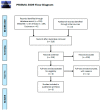
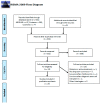
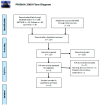
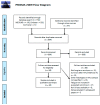
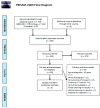
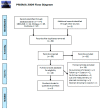
References
-
- Nademanee A., Sureda A., Stiff P., Holowiecki J., Abidi M., Hunder N., Pecsok M., Uttarwar M., Purevjal I., Sweetenham J. Safety Analysis of Brentuximab Vedotin from the Phase III AETHERA Trial in Hodgkin Lymphoma in the Post-Transplant Consolidation Setting. Biol. Blood Marrow Transpl. 2018;24:2354–2359. doi: 10.1016/j.bbmt.2018.05.026. - DOI - PubMed
Publication types
Grants and funding
LinkOut - more resources
Full Text Sources

